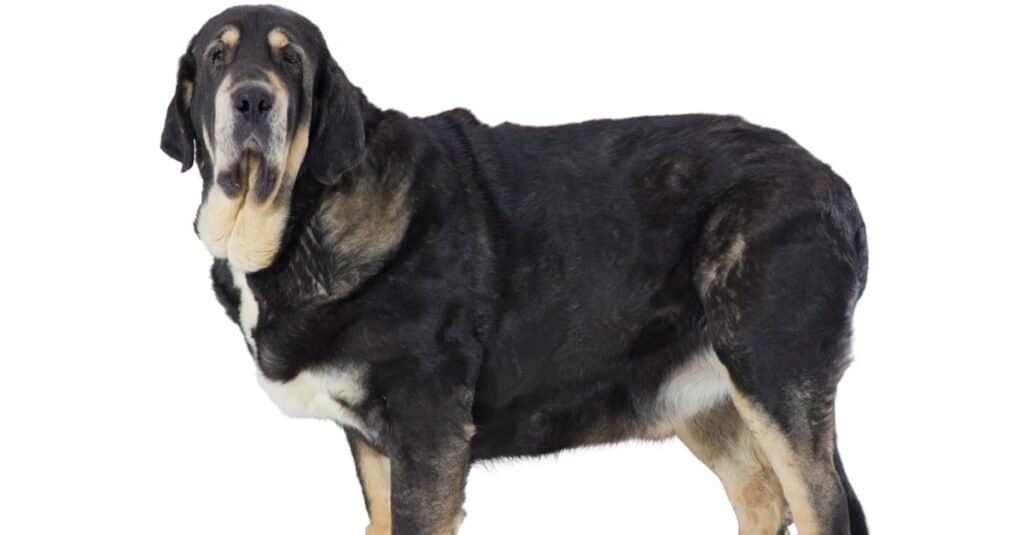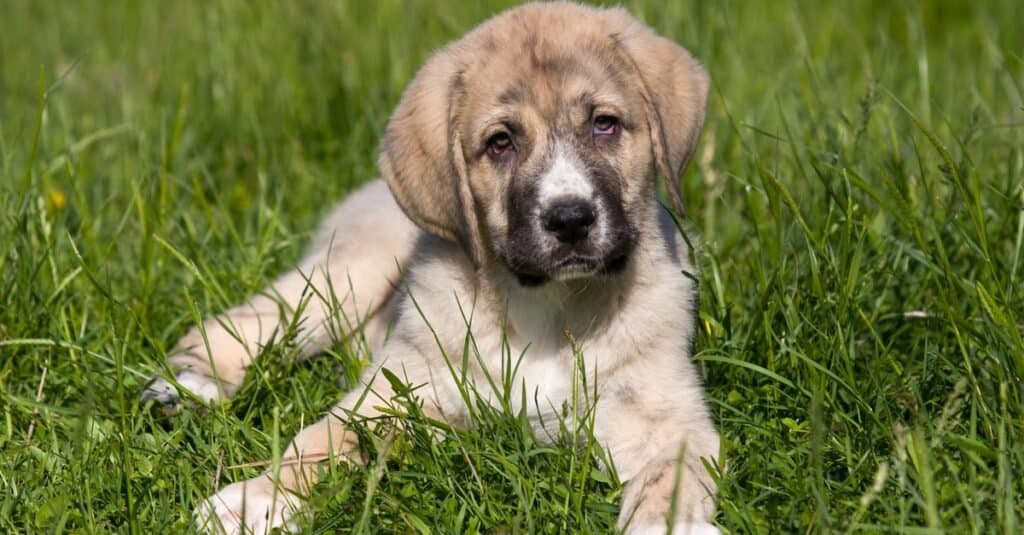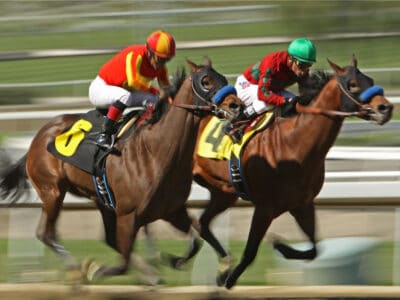Spanish Mastiff
Canis lupus
Diego Velázquez’s famous 17th century painting of the Infanta and her dwarves includes a portrait of a Spanish Mastiff.
Advertisement
Spanish Mastiff Scientific Classification
- Kingdom
- Animalia
- Phylum
- Chordata
- Class
- Mammalia
- Order
- Carnivora
- Family
- Canidae
- Genus
- Canis
- Scientific Name
- Canis lupus
Read our Complete Guide to Classification of Animals.
Spanish Mastiff Conservation Status
Spanish Mastiff Facts
- Fun Fact
- Diego Velázquez’s famous 17th century painting of the Infanta and her dwarves includes a portrait of a Spanish Mastiff.
- Temperament
- Affectionate, laid-back, independent
- Diet
- Omnivore
Spanish Mastiff as a Pet:
- General Health
- Energy Level
- Shedability
- Trainability
- Intelligence
- Tendency to Chew
- Size
- Family and kid friendliness
- Yappiness / Barking
- Low
- Separation Anxiety
- Low
- Preferred Temperature
- Cold climate
- Exercise Needs
- Moderate
- Friendly With Other Dogs
- Moderate
- Pure bred cost to own
- $1,200 to $2,000
- Dog group
- Working
- Male weight
- 160-220 lbs
- Female weight
- 110-170 lbs
This post may contain affiliate links to our partners like Chewy, Amazon, and others. Purchasing through these helps us further the A-Z Animals mission to educate about the world's species.
View all of the Spanish Mastiff images!
Diego Velázquez’s famous 17th-century painting of the Infanta and her dwarves includes a portrait of a Spanish Mastiff.
The history of the Spanish Mastiff goes back 1,100 years to the 10th century when shepherds began using them to defend migrating herds against grey wolves and other predators. Spanish Mastiffs are powerful canines with long legs, heavy bones, and muscular bodies, but they have surprisingly docile temperaments. In their homeland Spain, they are also known as the Mastín Español and Mastín de España. The American Kennel Club classifies these canines as working dogs.
See all of our expert product reviews.
While these dogs are good-natured and exceedingly intelligent, they can be hard to train because they’re firmly convinced that they are the true alphas of any group they’re in, and it can be hard to disabuse them of this notion. For that reason, they don’t make great pets for first-time dog owners. Spanish Mastiffs are Spain’s national dog; approximately 24,000 of them live in their native country, but there aren’t very many of these dogs outside Spain.

3 Pros And Cons Of Owning Spanish Mastiff
| Pros! | Cons! |
|---|---|
| They’re extremely affectionate: Spanish Mastiffs love their human families. Expect this dog to follow you everywhere and to protect you against anything he or she deems a threat. They’re tolerant of other household pets, too, if they’re familiar with those pets. | They drool a lot: All mastiffs drool more than other dogs because saliva tends to accumulate in their oversized jowls. The Spanish Mastiff is most likely to slobber after exercise, or after eating or drinking. Keep a clean rag handy at all times. |
| They’re very calm: These dogs are so laid-back that it’s easy to dismiss them as lazy. This is not actually the case, though. You’ll be amazed by how quick and agile they can be when you’re playing catch with them or if they sense something they perceive as a threat to their loved ones. | They occupy a lot of space: Spanish Mastiffs are big dogs. Even when they’re on their best behavior, their enormous size can pose a hazard to children, the elderly, and the disabled. If you live in an apartment, this is not the pet for you. |
| They make great watchdogs: They don’t bark a lot, but that doesn’t mean they’re not on the lookout for anything that might possibly menace their owner. With this massive canine by your side, you can walk the streets at 3 a.m. without fear. | They shed a lot: These dogs have dense double coats, which they shed twice a year in the spring and the fall. If you’re looking for a hypoallergenic pet, consider another breed. |

©LFRabanedo/Shutterstock.com
Types Of The Breed
The Spanish mastiff comes in two different types – the Heavy Mastiff (Mastin Pescado) and the Light Mastiff (Mastin Ligero). The Pescado, the larger of the two, is a bigger and heavier mountain type of dog while the Ligero is a more refined, lighter steppe variety.
Size And Weight
Spanish Mastiffs are enormous dogs. Adult males stand 30 to 35 inches tall and weigh anywhere between 160 and 220 pounds. Adult females are significantly smaller; they range in height between 28 and 35 inches, and they weigh between 110 and 170 pounds.
Puppies are just under a pound when they are born, but if they receive proper nutrition, they grow quickly. By three weeks of age, males may weigh as much as 15 pounds, and females may weigh as much as 13 pounds. By six months of age, males may weigh as much as 100 pounds, and females may weigh as much as 90 pounds. These dogs typically reach their adult height and weight between 12 and 18 months of age.
Health and Entertainment for your Spanish Mastiff
See all of our expert product reviews.
| Height (Male) | 35” Tall |
| Height (Female) | 35” Tall |
| Weight (male) | 200 lbs., fully grown |
| Weight (female) | 170 lbs., fully grown |
Common Health Issues

Spanish Mastiffs are prone to obesity and musculoskeletal problems.
©Sergey Lavrentev/Shutterstock.com
The typical lifespan of these dogs is 10 to 12 years. Obesity can be a significant issue with these canines, particularly if you don’t make a point of implementing a healthy eating routine with your pet while he or she is a puppy. You don’t want to encourage these dogs to beg for table scraps.
Like other large dogs, they are prone to musculoskeletal problems that include hip dysplasia and elbow dysplasia. Immature dogs can also be affected by eosinophilic panosteitis, which is a painful inflammation of the long bones in the legs. If this condition commences, you’ll begin seeing it when your puppy is between six and 10 months old. While eosinophilic panosteitis doesn’t cause permanent damage, it can be extremely painful and cause your dog to walk with a limping gait.
Because they drool so much, they are also prone to developing dental disease. If you own this breed, it is absolutely essential to brush your dog’s teeth regularly at home and to bring him or her to the vet for regular teeth cleanings.
- Obesity
- Hip and elbow dysplasia
- Eosinophilic panosteitis
- Dental disease
Temperament

Spanish Mastiff dogs are very relaxed and mellow but do best in a one-dog household.
©Alberto Duran Photography/Shutterstock.com
These dogs have placid, mellow temperaments. Their personalities are very relaxed so long as they don’t feel like they have to compete for their owner’s attention. Territoriality is a strong behavior trait in them, however. While they can be socialized to share the roost with another dog or even a cat, they prefer not to. They do best as only dogs.
Though loving and loyal, Spanish Mastiffs are independent dogs. They don’t mind spending time by themselves. They’re very intelligent, and this means that if they are not trained well, they may get into mischief if they’re off enjoying time on their own. They naturally assume that they’re the leader of the pack, and it is up to you as the owner to teach them differently.
How To Take Care Of Spanish Mastiffs
Because of their huge size, these dogs have some specialized needs when it comes to diet and exercise. Their short, dense double coats require some specific types of attention as well. Here are some tips for the types of care that will keep your dog healthy and happy.
The Best Dog Food For Spanish Mastiffs
These dogs typically consume four cups of high-quality kibble a day. As big dogs, they have a tendency toward bloat, so it’s safest to divide their feedings into at least two meals a day. Because they are prone to dental issues, definitely opt for dry dog food as opposed to wet/canned.
A-Z Animals feels the best dog food for Spanish Mastiffs is Eukanuba Adult Large Breed Lamb 1st Ingredient Adult Dry Dog Food.
Formulated specifically for big dogs, this lamb recipe also has supplemental chicken ingredients delivering natural glucosamine and chondroitin sulfate. Alongside calcium and phosphorus (which also help with dental health), these nutrients are instrumental in developing and maintaining sturdy joints. Since this kibble is protein-rich and includes healthy grains for fiber, it’ll satisfy your dog so it won’t overeat. Also, the crunchy texture and special shape help remove tartar and plaque for healthier teeth and gums.
Try out Eukanuba Adult Lamb dog food, available on Chewy or Amazon.
- Adult large breed dry dog food for large breed dogs 15 months or older, weighing over 55 lb.
- Promotes lean muscle development and joint health in active adult dogs with a combination of animal protein, chondroitin sulfate, and glucosamine.
- Helps keep dogs sharp and supports healthy brain function with DHA and vitamin E.
- Fuels an active lifestyle with optimal levels of fats and carbohydrates.
Maintenance And Grooming
These dogs have a dense, medium-length double coat and are prone to shedding. If you don’t want to add dog hair to your indoor decorating scheme, they need to be brushed vigorously at least twice a week with a pin brush and a metal comb. During the spring and fall, when they shed their coats, you may need to brush them daily.
Their nails are strong and grow quickly, so you’ll need to trim them regularly to prevent overgrowth and splitting. Their long, flat ears need to be checked for mites and cleaned regularly, too. As an excessive drooler, this breed is prone to dental disease, so brushing your dog’s teeth several times a week is highly recommended.
Training

Spanish Mastiffs are very stubborn and prefer to think for themselves. Early training is important.
©Sergey Lavrentev/Shutterstock.com
They are very smart dogs, but training can be a challenge, particularly for inexperienced dog owners. These dogs prefer to think for themselves, and they’re very stubborn. You’ll need to begin training and socialization activities early and reinforce that training over the course of their adult lifespan. Socialization is particularly important because its large size means that it can cause damage without intending to. Spanish Mastiffs respond best to positive reinforcement. They’re especially motivated by treats.
Exercise
Despite their size, Spanish Mastiffs are not high-energy dogs. Left to their own devices, many of them would cheerfully forgo exercise. A responsible Spanish Mastiff owner will not allow this, though. Plan on taking your dog for at least one 45-minute walk a day. Spanish Mastiffs are most active in their young adulthood, so they may need additional exercise during this time.
Puppies

©Utekhina Anna/Shutterstock.com
Spanish Mastiffs retain many of their puppy-like behaviors well into the third year of their lives. They typically have large litters of up to 10 puppies, and since they only weigh one pound at birth, breeders must take particular care to prevent a mother from inadvertently squashing and injuring her pups. It’s extremely important to feed a puppy specially formulated food so that he or she doesn’t grow too fast, which will place excessive strain on their joints.
Spanish Mastiff vs English Mastiff
The Spanish Mastiff has a longer, heavier coat than the English Mastiff, and its face and jowls are not as heavily wrinkled. English Mastiffs also tend to have longer, more pigmented muzzles. Whereas the English Mastiff was originally bred to be a fighting dog, the Spanish Mastiff was bred to guard livestock against predators.
Spanish Mastiff And Children
These dogs love children, and children love Spanish Mastiffs. Problems arise, however, when your dog forgets how big it is and accidentally causes a small child injury. This is one of the reasons why socialization is so important for this breed. Even with a well-socialized Spanish Mastiff, it’s wisest never to leave them unsupervised around children younger than 10 years old.
Dogs Similar To Spanish Mastiffs
Great Danes, Neapolitan Mastiffs, and Tibetan Mastiffs share traits in common with these dogs.
- Great Danes: Like Spanish Mastiffs, Great Danes have affectionate natures and drool a lot. Though they are big dogs and measure up to Spanish Mastiffs in height, they only weigh about half what a Spanish Mastiff weighs. Their lifespans are considerably shorter than the lifespans of Spanish Mastiffs.
- Neapolitan Mastiffs: Neapolitan Mastiffs are just as big and weigh just as much as Spanish Mastiffs. They’re considerably more aggressive, however.
- Tibetan Mastiffs: Tibetan Mastiffs aren’t quite as large as Spanish Mastiffs. Though they were bred to protect livestock, DNA studies have confirmed that they’re not true mastiffs but are more closely related to mountain dogs like St. Bernards.
Famous Spanish Mastiff
The actor Viggo Mortensen owns a Spanish Mastiff named Alatriste.
Popular Names For Spanish Mastiffs
Have a look at these names for your dog:
- Diego
- Felix
- Pablo
- Dulcinea
- Esperanza
- Estrella
Spanish Mastiff FAQs (Frequently Asked Questions)
How much does a Spanish Mastiff cost to own?
Spanish Mastiff puppies can be difficult to find in the U.S. The price for one, if you can locate a reputable breeder, will set you back $1,200 and $2,000. Many breeders live outside the U.S., so you may have to factor in the costs of transportation and lodging into the price you pay for the dog.
If that price seems high, you may be able to locate a Spanish Mastiff through a mastiff rescue organization. There are a number of mastiff rescue organizations throughout the country. Adoption through a rescue organization is not free, but the price is considerably lower than the price you may pay to a breeder.
Expenses your first year will include vaccinations, microchipping, spaying or neutering, bedding, food, toys, and training; total costs will range between $1,500 and $2,000. After that, expect costs of approximately $1,500 a year.
Are Spanish Mastiffs good with kids? (a more concise reframing of the section above with children)
Spanish Mastiffs are good with children, but they should never be left alone with children younger than 10 years old.
How long does a Spanish Mastiff live?
The lifespan of a Spanish Mastiff is 10 to 12 years.
Are Spanish Mastiffs dangerous?
Spanish Mastiffs are not particularly aggressive unless they believe their families are under attack. Their sheer size can make them dangerous if the dogs have not been properly socialized and trained, however.
Are Spanish Mastiff s good family dogs?
If they are properly trained and socialized, Spanish Mastiffs make excellent family dogs.
How big is a Spanish Mastiff ?
Spanish Mastiffs can grow as tall as 35 inches and weigh as much as 220 pounds.
How much does a Spanish Mastiff cost?
Expect to pay between $1,200 and $2,000 when you buy a Spanish Mastiff puppy from a reputable breeder.
Thank you for reading! Have some feedback for us? Contact the AZ Animals editorial team.
Sources
- Dog Time / Accessed August 1, 2021
- Wag Walking / Accessed August 1, 2021
- American Kennel Club / Accessed August 1, 2021
- Aubrey Animal Medical Center / Accessed August 1, 2021
- Wikipedia / Accessed August 1, 2021
- The Happy Puppy Site / Accessed August 1, 2021
- American Kennel Association / Accessed August 1, 2021
- Mastiff Guide / Accessed August 1, 2021



















